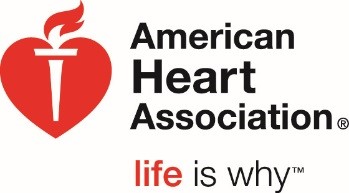by Jessica DiMeo, American Heart Association, Sr. Communications Director
Do you know what factors make up a healthy lifestyle? If you are already avoiding activities like tobacco use, there are two things big things that help prevent chronic disease – physical activity and nutrition.
March is National Nutrition Month, a nutrition education and information campaign focused on the importance of making informed food choices and developing sound eating and physical activity habit, from the Academy of Nutrition and Dietetics.
By improving nutritional habits, you can decrease the risk that you or a loved one will develop a chronic disease, like heart disease or obesity.
National Nutrition Month is so important, because improving nutrition habits can be hard. Learning healthy habits first, before bad habits form, is the best way for children to succeed in making good choices.
You can set your family up for success with the simple step of adding heart healthy meals to their diet. An easy way to do this is to visit the American Heart Association’s Heart Health recipes page, where you’ll find simple, delicious, and affordable recipes, videos and articles. These Healthy For Good ™ recipes emphasize fruits and vegetables, in order to promote overall healthy eating patterns – one of the best tips for heart healthy living.
During National Nutrition Month, the American Heart Association is working to help kids and families live heart-healthy lives by setting healthier diet goals. About one in three American kids and teens are overweight or obese, which can lead to a broad range of health problems. You can help your child develop healthy habits early in life that will bring lifelong benefits.
Here are 10 more simple tips to help you and your family on the right path to good health.
- Make it fun for kids to try new fruits and vegetables. Let them pick out a new fruit or vegetable in the grocery store each week, and figure out together how to cook or prepare it in a healthy way.
- Whole grains are a good option! Choose whole-grain foods, such as whole-wheat bread, rye bread, brown rice, popcorn, oatmeal and whole-grain cereal.
- When you cook at home you have more control over ingredients and portion sizes, so aim to cook at home more often than eating out. Get great recipes and tips at heart.org/simplecooking.
- Ninety percent of kids eat too much sodium. Use fresh herbs can wake up any recipe, along with your taste buds, with fresh and bold flavor, without adding salt flavor. Go to heart.org/sodium and take the pledge and learn how to reduce the sodium your family eats.
- Watch out for added sugars. They add extra calories but no helpful nutrients. Sugar-sweetened beverages and soft drinks are the number one source of added sugars for most of us. Try sparkling water, unsweetened tea or sugar-free beverages instead of sugar-sweetened soda or tea. Add lemon, lime or berries to beverages for extra flavor.
- Schedule time each week to plan healthy meals. Keep your recipes, grocery list and coupons in the same place to make planning and budgeting easier. This will keep you from calling for take- out which can be high in calories and are high in sodium.
- Enjoy fruit for dessert most days and limit traditional desserts to special occasions. Try a delicious smoothie, a mixed berry and yogurt parfait, or a baked spiced apple or pear!
- Get your kids in the kitchen! They’ll be more excited about eating healthy foods when they’ve been involved. Give them age-appropriate tasks and keep a step-stool handy.
- Chicken, fish and beans are good choices for protein. Remove skin and visible fat from poultry. If you do eat red meat, limit it to once in a while, keep portion size small and choose the leanest cuts.
- Make a game of reading food labels - The whole family will learn what’s good for their health and be more conscious of what they eat. It’s a habit that helps change behavior for a lifetime.

The American Heart Association offers more resources to help your kids live a longer, stronger life. For information and tips on healthier kids including weight management, physical activity and nutrition go to heart.org/healthierkids.